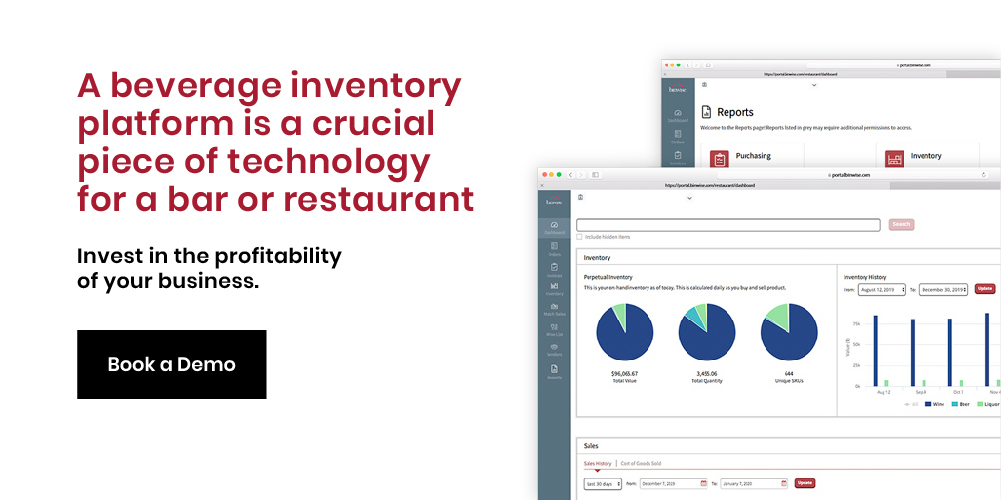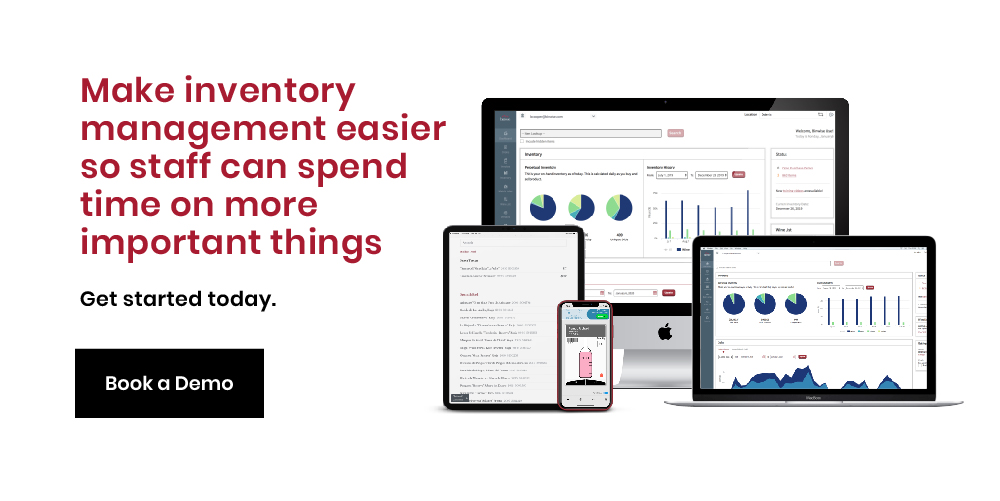The hospitality industry has faced unprecedented challenges and uncertainty during the past few years. Despite these difficult times, restaurateurs have forged ahead with innovative solutions that have enabled them to survive and even thrive, in the restaurants and on their restaurant profit and loss statements.
One of these innovative solutions has been the concept of starting a virtual restaurant. Virtual restaurants have given restaurant owners a way to focus less on restaurant and bar equipment layout, and more on customers directly. This has also changed the cost to open a bar or restaurant a bit, as it focuses less on design aesthetics and more on the positives of flat rate shipping for inventory items.

The Rise of Virtual Restaurants
One of the significant developments of this period has been the rise of virtual restaurants. This business strategy gained momentum during the COVID-19 pandemic that began in 2020.
Many restaurants were closed or faced strict operational limits during the height of the pandemic. At the same time, the demand for home delivery food skyrocketed as many people were required to stay at home.
The virtual restaurant concept (along with ghost kitchens) enabled restaurants to survive, gave them an idea how to increase restaurant sales, and changed their restaurant KPI list. It became possible to offer a diverse range of dishes from the ingredients they already had in stock.
Back of the house staff could prepare dishes for multiple menus rather than in one traditional restaurant with limited capacity. It allowed restaurants to minimize layoffs and keep operating through the lockdowns. What is a virtual restaurant? It's much more than just a trendy restaurant lingo term.
What Is A Virtual Restaurant?
A virtual restaurant is a delivery-only concept often set up within an existing restaurant, allowing businesses to cut costs. It's an excellent financial option because it provides a new revenue stream without increasing overhead costs, keeping your restaurant balance sheet looking good.
Virtual restaurants rely on existing staff to prepare and package orders. They use third-party delivery services, such as DoorDash, GrubHub, or Uber Eats for deliveries. The customer places an order from the virtual menu, and the existing staff prepares the order alongside orders from the primary business. This makes it nearly impossible for the customer to dine and dash.

How to Open A Virtual Restaurant
Innovative restaurateurs are taking advantage of delivery-only concepts to increase revenue, attract new customers, and supplement their core business.
It's a good investment to start a virtual restaurant concept. However, it's vital to conduct thorough research and make informed decisions when opening a virtual restaurant. Here are eight ideas and steps for how to open a virtual restaurant:
1. Choose A Unique Concept
First, identify which virtual restaurant concept would suit your business strategy. Then, calculate how much money, time, and resources you want to invest in a virtual restaurant. You want to increase restaurant sales without taking too much focus off of your main operation. Finally, consider how much space you need, your ideal location, and your target market.
2. Identify The Competition
Part of your research should be identifying and analyzing your competition. Does your idea stand out? Is there a gap in the market that your virtual restaurant can fulfill? Learn as much as possible about your competitors to determine areas where you can gain an advantage.
Learn what's helping and hurting them, which technology they're using, and from which kind(s) of wholesale suppliers they're sourcing. This research will give you a clear strategy to implement effective practices for running your successful virtual restaurant.
3. Choose Your Commercial Kitchen
Consider a few top virtual restaurant providers, including Cloud Kitchens, Kitchen United, and C3. Cloud Kitchens started in 2016 and can get your ghost kitchen up and running in a few weeks. Kitchen United gives you the visibility of a brick and mortar for less capital and minimal risk. C3 is in the process of creating ghost kitchens for residential properties.
When choosing a commercial kitchen, think about how quickly you'd like to get up and running. Also, consider your number of potential customers and the type of technological capabilities each provider offers.
4. Research Your Preliminaries
Learn the laws and regulations for opening and operating a virtual restaurant. Generally, your local health department and planning department will regulate ghost kitchens. All business health standards and codes also apply to a ghost kitchen’s business operations.
It includes registering your business, earning your ServSafe Food Handler Certification, investing in liability insurance, and scheduling any necessary inspections.
5. Technology And Providers
Research the latest restaurant technology and providers for your delivery orders, then find a good service delivery driver.
Many virtual restaurants use third-party delivery services such as DoorDash, GrubHub, and Uber Eats. It will showcase your menu to a larger audience of potential customers. You’ll sometimes see the 3pl abbreviation used for third-party logistics providers. Do some research on this topic to find the best 3pl service provider for your ghost kitchen.
However, you might want to consider a first-party delivery solution to have more input on your marketing strategy and avoid high fees.
6. Create Your Menu And Hire Your Staff
Depending on the concept and plan you've chosen for your restaurant, you'll prepare items for your menu. Begin with a manageable menu size before possibly expanding and venturing into different types of cuisine.
Think about food preparation and delivery when staffing your virtual restaurant. You'll probably need to hire three to five people to start your restaurant operations, possibly more depending on the scope of your business. Your delivery provider can give you helpful tips for staffing the right amount of people for your restaurant.
7. Invest In And Promote Your Brand
Establish a presence on social media, including Facebook, Instagram, Twitter, and LinkedIn to create awareness of your virtual restaurant. Create a landing page and a blog to increase your visibility online. Research some of the best keywords for restaurants and build your site's SEO.
Include some high-quality photos of the dishes you offer. It's necessary since you won't have a physical location for people to see.
You may want to hire an expert in digital or social media marketing, even temporarily. This will help maximize your content's searchability.
8. Test And Adapt Your Concept
The only way to know if your concept will be successful is to start testing it on the market. Listen to feedback and reviews from customers and adapt as time goes on.
Technology is changing, so gather information on new technology in restaurants. Pay close attention to what people say about your technology and provider. Stay up to date with new trends in the industry, including new technology and developments in virtual restaurants.
3 Reasons Why You Should Open a Virtual Restaurant
1. Increase Revenue for Your Core Business Without a Rise In Overhead Expenses
If you're already running a brick-and-mortar restaurant, you have employees ready to help your virtual restaurant concept get off the ground. The various types of chefs have the skills to prepare a wide range of unique dishes. Additionally, you're paying rent and insurance for your location, so you can launch a new venture without paying for a second location.
The employees you already have can step in and prepare orders for your virtual restaurant. Overall, it's a great way to increase order volumes and boost revenue for your business.
2. Attract More Customers
There are plenty of people looking for something new and different to eat. Just because you run a burger joint doesn't mean you can't try out a few Mexican food appetizers as a virtual concept.
It's another way that virtual restaurants can provide value to restaurateurs. A virtual operation is how to increase your overall restaurant profit without completely rebranding your business.
3. Expand the Reach of Your Business Operations On Delivery Apps
Your primary food business may already operate on DoorDash, GrubHub, or Uber Eats, but the use of delivery apps continues to grow. Delivery apps can help both your existing restaurant and your new virtual restaurant concept.
The Future of Virtual Restaurants
As traditional restaurants begin their recovery from the pandemic, industry experts predict continued growth for virtual restaurants. Maybe you’re a restaurateur looking to expand your brick-and-mortar operations into the virtual restaurant industry.
Perhaps you want to partner with someone in the industry to get in on this exciting concept. Either way, conduct research and learn as much as possible about how to open a virtual restaurant before starting your new venture.

Frequently Asked Questions About How to Open A Virtual Restaurant
1. Are Virtual Restaurants Profitable?
Most virtual restaurants generate 25-50% of the sales of traditional brick-and-mortar restaurants, but with significantly lower startup costs. A 25-30% profit margin is generally a good target.
2. Can I Run A Virtual Restaurant From Home?
Yes, it's possible to run a virtual restaurant from home. A virtual restaurant can be a standalone delivery or an off-premise support kitchen. In most cases, you only need cooking and packaging essentials–in addition to the ingredients themselves
3. What Is The Difference Between A Virtual Restaurant And A Ghost Kitchen?
Virtual restaurants are typically new brands that operate out of existing kitchens. Ghost kitchens usually don't run out of an existing restaurant but out of space rented from a third party.

.png)